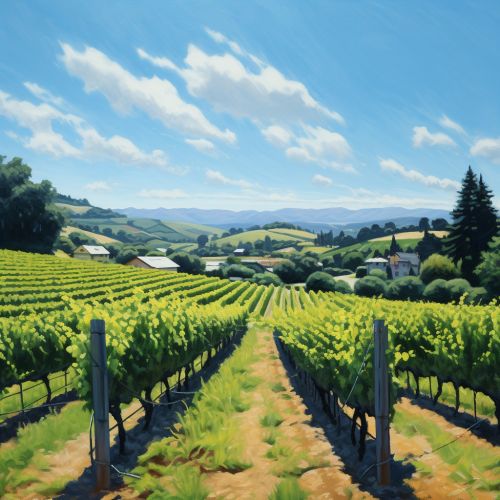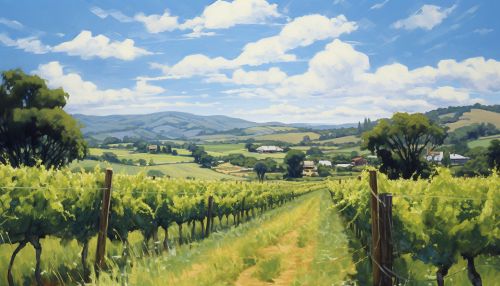Viticulture
Introduction
Viticulture, also known as vine growing, is the cultivation and harvesting of grapes. It is a branch of the science of horticulture. While primarily associated with the production of wine, grapes are also grown for the production of raisins, table grapes, and non-alcoholic grape juice. The science, practice, and study of viticulture is known as viticulture.
History
Viticulture has a rich and ancient history. The earliest evidence of grape vine cultivation and winemaking dates back 7,000 years to Georgia in the South Caucasus. The domestication of the grapevine followed later in, for example, the Near East, the Nile Delta, Egypt and Crete. The earliest evidence of a grape-based fermented drink was found in China (c. 7000 BC), Georgia from 6000 BC, Iran from 5000 BC, and Sicily from 4000 BC. The earliest evidence of a wine production facility is the Areni-1 winery in Armenia and is at least 6100 years old.


Cultivation
Viticulture is both an art and a science, with a strong tradition that dates back thousands of years but also a deep scientific understanding of the vine and the terroir, or the environmental conditions, in which it is grown. The cultivation of the domesticated grape began 6,000–8,000 years ago in the Near East. The earliest archeological evidence for a dominant position of wine-making in human culture dates from 8,000 years ago in Georgia.
Grape Varieties
There are thousands of grape varieties cultivated for wine production, with many more grown for other uses. Some of the most well-known include Cabernet Sauvignon, Chardonnay, Merlot, Pinot noir, and Zinfandel. Each variety has its own unique characteristics, including flavor profile, growth habit, and susceptibility to diseases.
Vineyard Establishment
Establishing a vineyard requires careful planning and consideration. Factors to consider include site selection, soil preparation, vine selection and planting, and trellis installation. The goal is to create a vineyard that is sustainable, productive, and capable of producing high-quality grapes.
Vineyard Management
Vineyard management involves a range of practices aimed at maintaining vine health and optimizing grape quality. These include pruning, canopy management, irrigation, pest management, and harvesting.
Grape Diseases and Pests
Grapes are susceptible to a number of diseases and pests, including fungal, bacterial, viral, and insect pests. Some of the most significant include Phylloxera, Powdery mildew, and Botrytis cinerea. Management of these issues is a critical aspect of successful viticulture.
Harvesting and Winemaking
The harvesting of grapes and the subsequent winemaking process is a crucial part of viticulture. The timing of the harvest is of utmost importance and is determined by the ripeness of the grape as measured by sugar, acid and tannin levels.
Viticulture and the Environment
Viticulture has both positive and negative impacts on the environment. On the positive side, vineyards can contribute to biodiversity and provide habitat for a variety of wildlife. On the negative side, viticulture can contribute to soil erosion, water scarcity, and pesticide pollution.
Future of Viticulture
The future of viticulture is likely to be shaped by a number of factors, including climate change, advances in technology, and changing consumer preferences.
